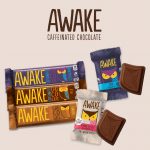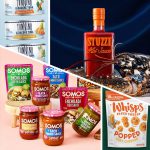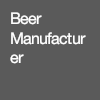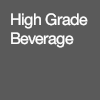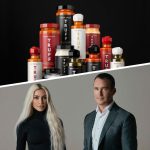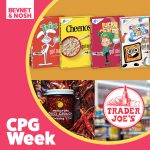Survey of Surveys: In Shadow of Big Brands’ Declines, Entrepreneurs Grow
When you talk to a small CPG brand about what they hope to see sales-wise, with stars in their eyes, they often speak to performing as well as Hershey’s, Pepsi, Campbell. But as recent studies have indicated, life out there in the wild CPG world is getting harder and harder for the big guys.
Changing consumer values, new brand aesthetics, and overall disenchantment with many of the brands owned by those big food companies have been creating changes in the retailing world for several years now — but a series of surveys reviewed by Project NOSH indicates just how drastically those changes, many driven by the 50-million-plus millennial demographic, have manifested.
In one survey, Catalina, a personalized digital media company that connects shoppers and brands, has created a yearly index of its “Top 100 Brands.” This past year, the company found that as a group, revenues for the Top 100 Brands declined slightly (-0.8 percent) within the Catalina network. This would be less surprising if the sales across all brands and categories in the Catalina network weren’t up six percent for the same time period.

Even among the 38 brands that saw growth, the average percentage of 5.5 percent growth did not keep pace with their respective categories’ average growth of 7.2 percent.
So what’s causing the discrepancy?
First, there’s the entrance of thousands of new, smaller brands that aren’t afraid to take on the big boys. These companies are able to be more nimble, experiment more and pivot when they’ve made a wrong choice. Rather than having to invest millions in R&D, get signoff from umpteen EVP’s, and run a product through a parade of focus groups, small companies can think smart, act quickly and get a product out into the market.
This finding was echoed by a 2015 study of CPG brands by the Boston Consulting Group and IRI. The companies found that “small and midsize companies stole 0.7 points in 2014 and 2.0 total points since 2009 [for a] worth of $4.5 billion and $18 billion respectively.” For this study, midsize companies still had $1-$5 billion dollars in sales and small had $100 Million to $1 Billion dollars in 2014 sales, but it is still indicative of the general shift in sales patterns.
Cutting While Nimble
Beth Johnson, Executive Director of Special Projects at Catalina, spoke with Project NOSH about this change. “The share gain [for some smaller brands] might be only a tenth of a share point, but that’s still big for a small emerging brand.”
Benjamin Frohlichstein, the founder gluten-free, grain-free pasta brand Capello’s, sees the benefit of being small. 
Changing aesthetic sensibilities — particularly among the much-prized Millennial demographic — may also be playing a role, Frohlichstein suggests.
“When you look at all the products and all the brands on the shelf, specifically in the grocery store, they have a homogenous feel to them,” he said. “We want someone to have an experience from start to finish with our product. From opening the package to eating it to discarding the package into the recycling bin or reusing the container for a lunch the next day…So many products are just designed to be eaten and there’s not a lot of thought that goes into the interaction we have with the product before and after that.”
It might seem counter-intuitive, but along with the death-by-a-million-small-brand-cuts that is bleeding large brands, more competition from the once-drab private label sector is also slashing at their share.
This competition was underlined in a recent survey of the ever-important Millennial demographics by MediaPost, whose publications cover the advertising industry. MediaPost reported that Millennials tend to buy store brands more than any branded item. One respondent wrote “Most of what I buy is unbranded organic produce or meat/seafood” while another respondent said “I don’t really shop based on brand, unless a brand makes terrible or very unhealthy food. Then I say no to that.” Millennials were also cited as the lead actors in a shift of nearly $18 billion in revenue away from big brands and toward smaller ones in a recent panel run by Fortune Magazine.
While previously focused on staple items, private label products are diversifying into those same fast-growing segments, natural, ethnic, specialty and organic. As a result, Catalina’s Shifting Brand Interaction Index shows a significant movement from Top 100 Brands to private label products. This shift is also echoed in Catalina’s findings that “more than half of shoppers who were highly loyal to a Top 100 brand in the 12 months prior to the study period did not remain loyal in the subsequent 52-week period.”
That’s part of an ongoing increase in consumer understanding that store brands are often the same products as their branded counterparts. Organizations like Consumer Reports have helped push this notion, and as retail channels have shifted into natural and high-profile club stores like Costco, consumers’ resistance to store brands has waned, especially as those private label brands are expressions of the channel values rather than the big brands’.
Changing Value Sets
For entrepreneurs who are basing their marketing on consumers’ increased desire for natural, organic, sustainable and healthy food options, they see distrust in large food companies as an advantage. Ari Raz, the co-founder of new baby food brand Once Upon a Farm, told Project NOSH “You only have a few chances to make a first impression with a consumer. And when you make that impression, it’s going to last forever. So when you think of Coca-Cola, you don’t think of a healthy product.”

Those findings were also reflected in the Catalina study. Refrigerated meats, for example, showed 11 percent growth — but Top 100 Brands’ sales decreased by .4 percent. This is a category where quality of product and provenance deeply matters to consumers. As a result, in meat, many larger brands are buying smaller natural players. In 2015 alone Hormel bought Applegate and Perdue purchased Niman Ranch.
One of the largest discrepancies between category sales and Top 100 Brand sales was in the frozen category. While the category gained 3.5 percent, Top 100 Brands saw a decline of 7.8 percent. Consumers are searching for more products that embody “freshness” and achieving this in the frozen aisle is difficult enough for any brand, let alone a large brand known for churning out large quantities of products.
A smaller brand is able to speak to it’s quality standards and often achieve the legitimacy in the space that a Top 100 brand cannot. On the frozen category, Johnson told Project NOSH, “I’m seeing more of the healthier choices. People are starting to look at the nutrition labels and make choices that way…I think they’re being a little more informed about what is included in a frozen meal or any other frozen food.”
MediaPost’s survey echoed those value changes, finding that when their Millennial panel was asked “What are some of your favorite, or go-to, brands when grocery shopping?” 12 percent named brands with the words “organic, nature, fresh, garden,or farm” in the name. When asked which labels were most likely to influence purchasing when grocery shopping, 35 percent told MediaPost “all natural” and 34 percent said “organic.”
The Specialty Food Association also recently found that 51 million Millennials purchase specialty food and, in particular, look for products that are “eco-friendly, artisanal, and gluten-free.” Among baby boomers, Generation X-ers, and Millennials, the SFA found that Millennials represent the highest segment purchasing specialty items.
Raz sees this movement benefiting his own baby food line, which uses high pressure processing rather than pasteurization to reach consumers who favor fresher, more nutritionally available ingredients.
“We’re seeing a shift in focus on what consumers are looking for,” Raz said.“I think that shift is aligned with the fresh food movement where consumers want to see better quality. Not just of the ingredients, but where the ingredients are from? What processes were used to make the product? They want to know the people behind the brand. Are they people they can trust? Are they people that have their best interest in mind?”
Millennials’ plans for family and marriage also affect sales. In the TABS Group Third Annual Consumer Value Study of Consumers, research showed that drops in sales are usually due to the amount of “heavy buyers” (individuals who make purchases in a category 12 times a year) decreasing. TABS found that “In 2015 heavy buyers accounted for roughly 25 of buyers and 50 percent of transactions.”
The most important variable for predicting a heavy buyer, according to TABS, is having children in the household. In previous years, many Millennials would be in this heavy buyer category by now because of children, but because they are delaying having children later in life, this increased purchasing power has not yet appeared.
